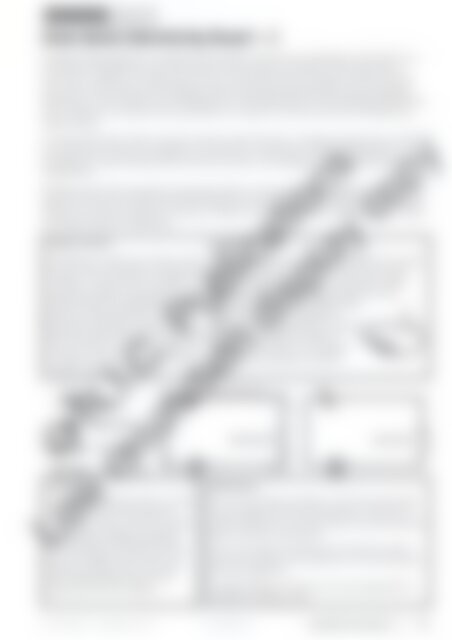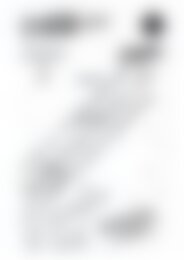8561RB AC Science Year 6 revised edition LR watermark
Create successful ePaper yourself
Turn your PDF publications into a flip-book with our unique Google optimized e-Paper software.
Physical sciences Lesson 2.1<br />
How does electricity flow? – 1<br />
Imagine riding a bicycle on a path around a lake. If there are no obstacles on the path, you<br />
can easily complete the circuit and end up back where you started. In the same way, if<br />
there are no breaks in an electrical circuit, a current will start at a battery and flow around<br />
the circuit until it is back at the battery. If when cycling an obstacle falls on the cycle path<br />
behind you, it will not stop you completing the circuit because you have already passed that<br />
point. However, if a break occurs anywhere in an electric circuit at any time, the electricity<br />
stops flowing.<br />
On the bicycle path, there may be a tunnel to ride through or a bridge crossing over a stream,<br />
but these will not stop your progress. In an electric circuit, there may be a light globe or a<br />
doorbell that uses the electricity but, like the tunnel or the bridge, they do not stop the flow<br />
of electricity.<br />
Perhaps a train line crosses the cycle path. When a train is due, warning lights flash and a<br />
gate comes down across the path, blocking the way. Until the train has passed and the gate<br />
is lifted, you will not be able to continue. A switch in an electric circuit is like that gate. It stops<br />
and starts the flow of electricity.<br />
Electric current<br />
Everything is made up of atoms, each<br />
of which has a positively charged core<br />
(called a nucleus) and a number of<br />
concentric shells surrounding it. These<br />
shells contain tiny negatively charged<br />
particles called electrons. In metals,<br />
electricity is the flow of electrons from<br />
the outer shell of one atom to the outer<br />
shell of another. This flow of electrons<br />
is called a current. The path of the<br />
current is called a circuit.<br />
+ve<br />
-ve<br />
Voltage<br />
battery<br />
light globe<br />
open switch<br />
closed switch<br />
+ve<br />
-ve<br />
To make the electricity flow, a force<br />
is needed to push the electrons<br />
around the circuit. This force, which<br />
is called the voltage, is provided<br />
by the battery. The electrons flow<br />
from the negative terminal of the<br />
battery, along a wire to the load,<br />
then along another wire to the<br />
positive end of the battery.<br />
Electric circuit<br />
A simple circuit consists of a battery to provide<br />
power, wires to carry the current and a load<br />
that uses the electricity; for example, a light<br />
globe. The wires are connected from the<br />
positive end to the negative end<br />
of the battery. In between, a<br />
light globe is attached. A switch<br />
can be added, to create or _<br />
break the circuit, so the globe<br />
can be switched on and off. +<br />
flow of electrons<br />
closed switch<br />
Resistance<br />
+ve<br />
-ve<br />
open switch<br />
© R.I.C. Publications<br />
Low resolution display copy<br />
As a current flows through a circuit, the wire exerts<br />
a force against the flow of electrons. This force is<br />
called resistance. It causes friction by slowing down<br />
the movement of electrons.<br />
A thin wire slows the electrons more than a thick<br />
wire and creates more resistance. This is the same<br />
for the longer wire.<br />
It takes energy for electrons to move against the<br />
resistance along a wire.<br />
R.I.C. Publications ® ricpublications.com.au 978-1-923005-13-6 Australian Curriculum <strong>Science</strong> (<strong>Year</strong> 6) 61

















